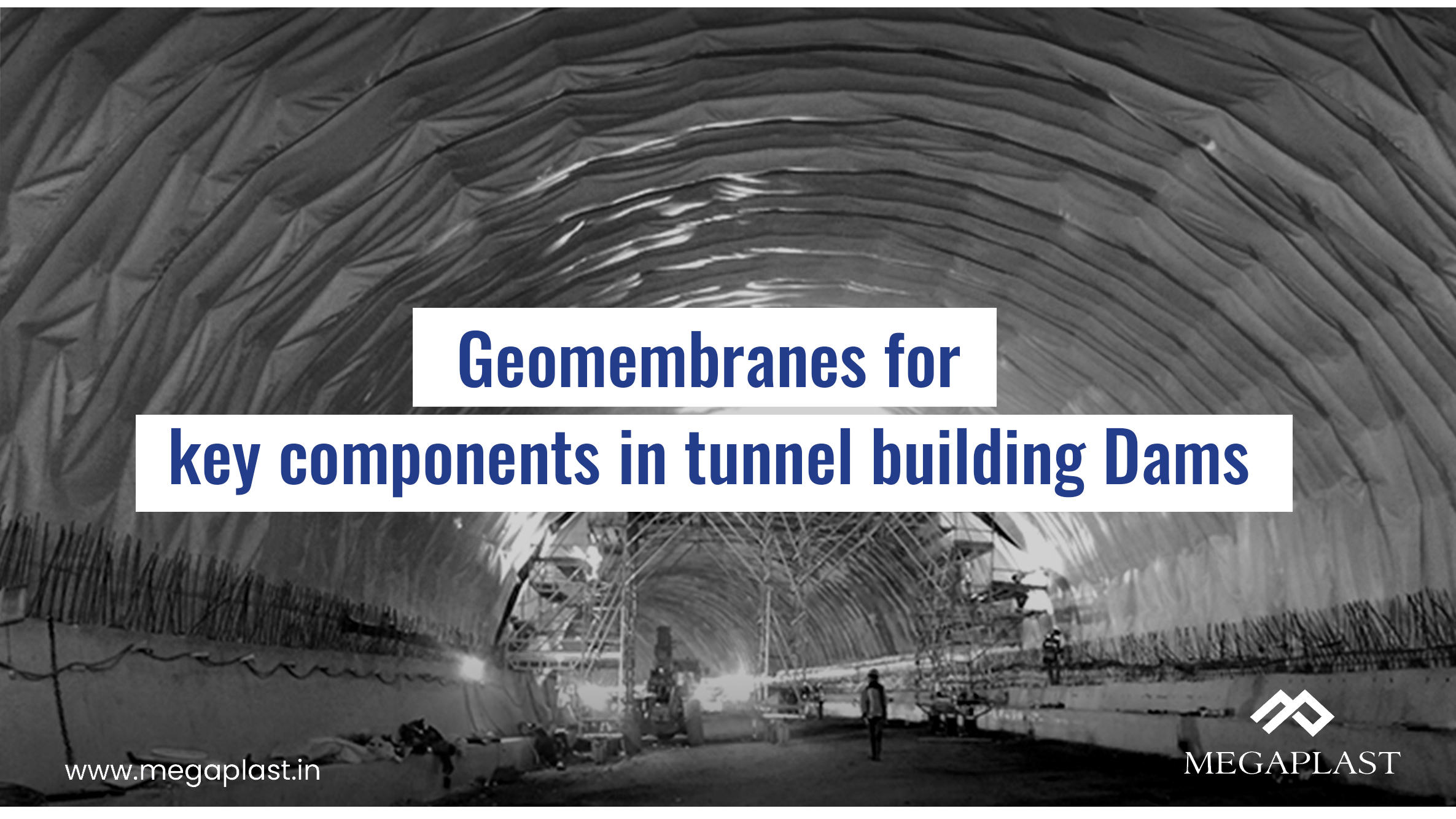
The polyethylene Geomembrane is frequently associated with various heavy construction applications due to its properties that revolve around chemical resistance, smooth or textured along with other finishes and remarkable elongation. The standard Geomembrane has a very important purpose in the application of tunnel construction, where the use of durable HDPE Geomembranes make up one of the layers mainly as a lining system, for the prevention of water leakage and other fluids into the tunnel.
Tunnels are geotechnical structures briefly affiliated with roadways, railways and other rapid transit systems. However, tunnels are also utilised for conducting water and sewage. Constructed by digging through earth and rock, this immersed tube must be dexterously equipped with exceptional stand-up time, cross-sectional shape and groundwater control. The latter of these properties, that is groundwater control or ‘Waterproofing’, is where Geomembrane linings of various types come into the picture.
Let’s dive into the workings of Geomembranes in tunnels for the processes that secure the strength of this structure, namely through waterproofing, seepage control, gas migration control and containment:
Waterproofing: The Megaplast protective Geomembranes that stretch up to 8 metres wide and come in thickness types of 0.5 mm to 3 mm are preferred due to their excellent mechanical properties like durability and long-term efficiency. The Geomembranes are placed between the concrete around the roof and sides so that the aggressive attack of groundwater or external water pressure is tackled before reaching the walls of the tunnel. Ease of installation, maintenance and repair are added benefits of the Geomembranes that help barricade contaminated percolating water.
Controlling Seepage: A vital necessity especially during monsoons is the protection of tunnel walls from seeping water that carries eroded soil and rock material. Geomembranes installed within the structures of a tunnel avert direct seepage and limit the drainage of mountain/ groundwater into the drainage mats designed for the flowing and collection of this water. The collection of the drained water must be systematic to impede further damage to the tunnel and upkeep the structural integrity of the tunnel.
Gas Migration Control: Similar to the fencing of seepage water emerging from external sources into the tunnel, Megaplast Geomembrane liners also protect the external land formations and other structures surrounding the tunnel from leakage and escape of harmful gas emanating from inside the tunnels. In consideration to seepage water tunnels, gases generated from the toxic fluids such as methane if escaped, pose a great risk to living things but with the help of flexible and high-tensile Geomembranes, these hazards can be avoided.
Containment of fluids: Geomembranes produced by Megaplast have been frequently chosen for landfill lining and conservation of water. This reiterates the properties that the MegaLinerTM sheets exude; the Geomembranes have superior strength and multiaxial impact. Thus, when it comes to containing fluids such as fuel and chemical spills running through tunnels, a geomembrane helps to protect the environment from contamination of hazardous materials.
Overall, Geomembranes are important components in the construction of tunnels drastically helping the structural integrity and long-term performance of these critical infrastructure projects.
As top Geomembrane manufacturers in India and around the world, you can rely on our quality of PE liners, bespoke for your individual necessities. Let us know what your Geomembrane requirements are at info@mega-group.in or contact us on +91 022 - 6106 6000.
For more information. Please complete this form.